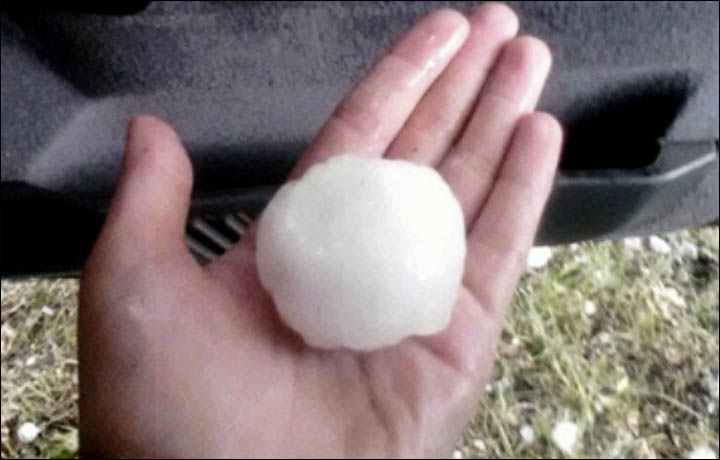
In Chelyabinsk region on the western fringe of Siberia, snow fell giving a ground cover of up to an unprecedented ten centimetres in the southern Urals.
In Magadan, in the extreme east, three months of rain fell in a day and a half, with locals water skiing along highways.
Last month, Yakutsk - capital of Siberia's coldest republic, Sakha, also known as Yakutia, recorded its highest-ever 21 June temperature of 35C.
Another northern regional capital Khanty-Mansiysk has also enjoyed unusually balmy weather this summer.
On 12 July, the city of Tomsk hit 35.9C, a maximum, and on the same day records were broken in Novokuznetsk, Novosibirsk, Kemerovo and Barnaul, according to weather source www.meteo-tv.ru
Not everyone has been frazzled, however. In Tyumen, there was a bracing 12C, low for July.
And while it was hot in Kemerovo, our remarkable picture shows the giant hailstones that thudded down on the mountainous region. This came a day after an extraordinary hailstorm at the main river beach in Novosibirsk, Siberia's largest city. Our pictures of this shocking cloudburst have already sped around the world.
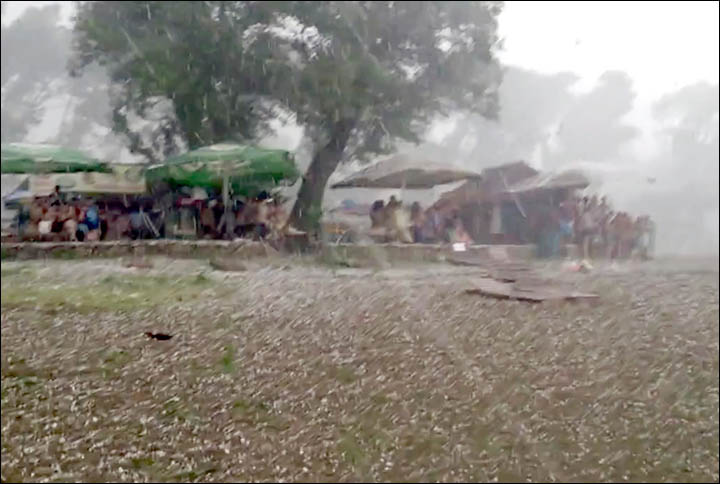
Snow was also spotted in the town of Satki, Chelyabinsk region.
According to the local media, in some areas there was a temporary snow cover of between 5 and 10 centimetres. It was claimed such snow had never previously fallen in the Southern Urals.
Chief forecaster of the Urals Department for Hydrometeorology and Environmental Monitoring Galina Sheporenko said: 'Snow fell last time in July in the Urals 100 years ago.
'The reason for the current weather anomaly is a cold Arctic cyclone. It is small in scale but very insidious: deepening and gaining strength along the way. Because of it, the temperature dropped significantly in the region.... and snow even fell in the mountainous regions.'
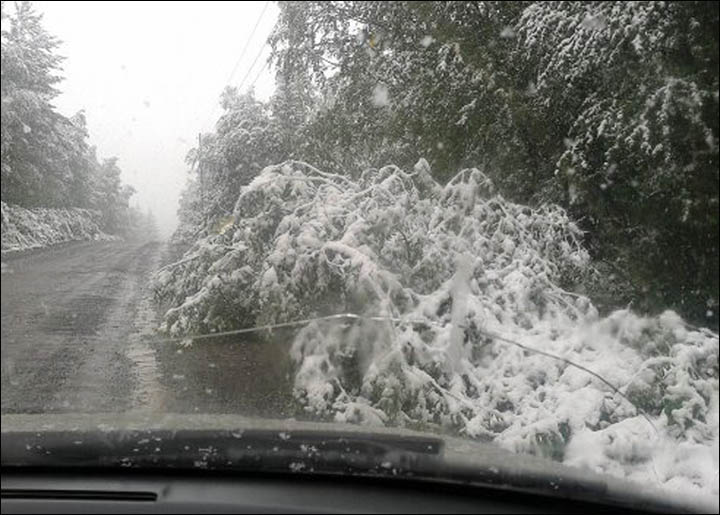
An emergency was declared in Magadan following spectacular flooding with three times the monthly rainfall norm deluging on towns and villages within 36 hours. The floods were reported to be the worst in recorded history.
Locals made the best of it - water-skiing on roads that turned into rivers.
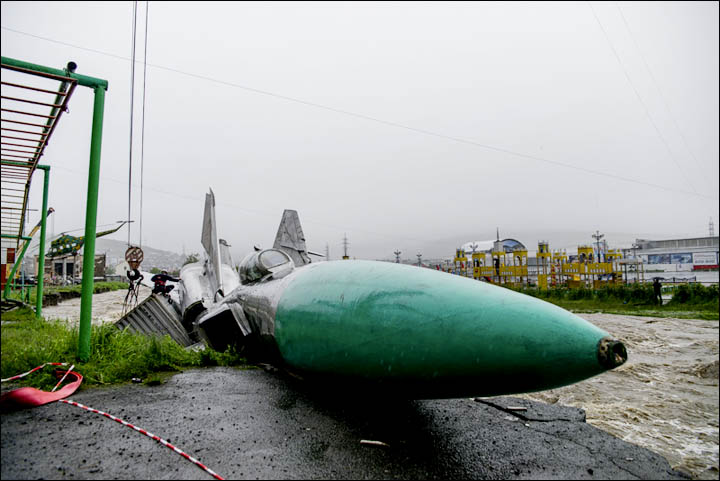
Both Siberia and the Far East have been hit by forest fires.
On 25 July, 85 forest fires covering 110,000 hectares were raging in the Siberian Federal District. Firefighters had extinguished another 26 fires covering 32,500 hectares in the previous 24 hours, but another 34 were burning the Russian Far East.
But on Monday it was reported that the areas hot by wildfires in the Siberian Federal District more than doubled to 52,300 hectares. Some 158 wildfires were registered, with Irkutsk and Krasnoyarsk regions facing the most problems. Some 25 fires also broke out in the Far East of Russia.
There have been 2,049 fires on more than a million hectares in the Far Eastern Federal District this season. The district recorded 914 fires on more than 438,000 hectares a year ago.
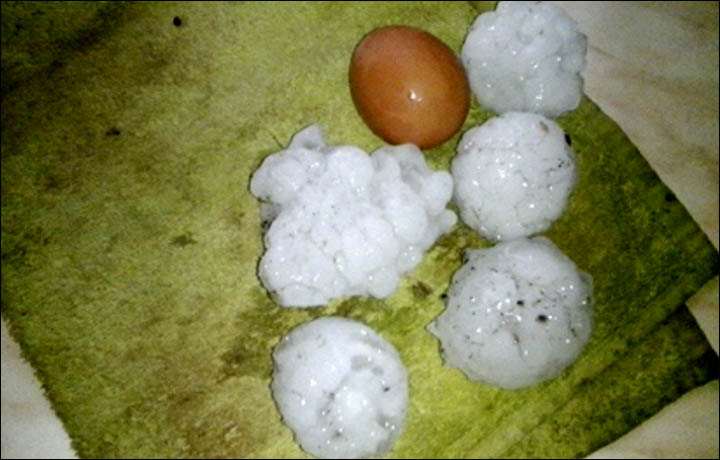
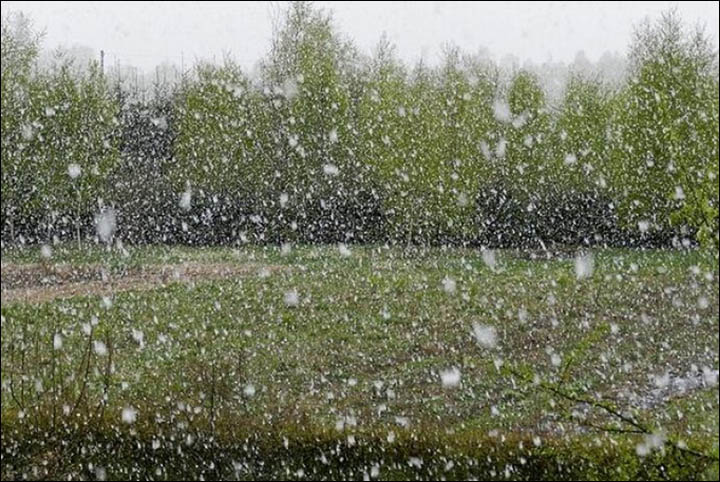
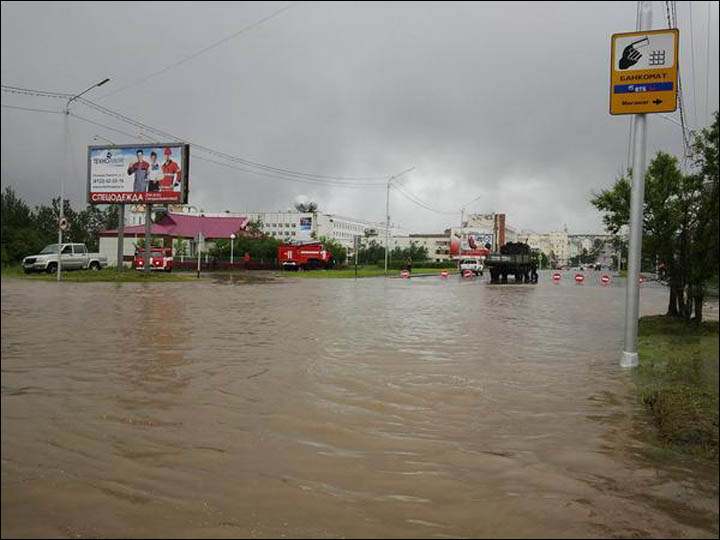
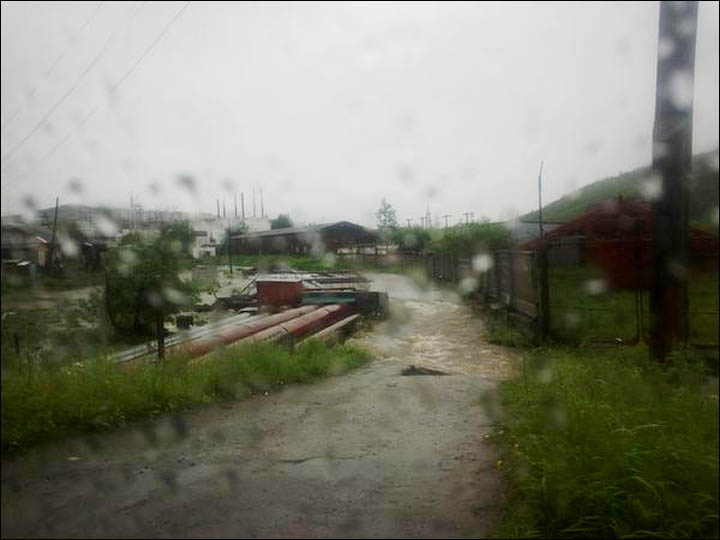



Reader Comments
to our Newsletter